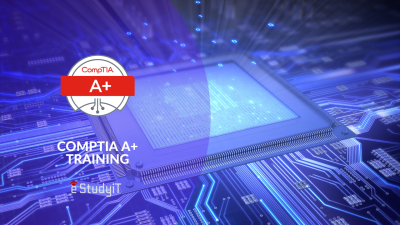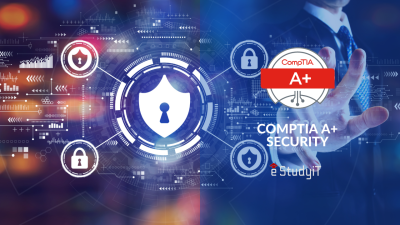Overview
CompTIA Security+ is a certification that is part of the CompTIA Security Certification ladder and is designed to equip candidates with the skills, knowledge and a comprehensive understanding to effectively protect and secure systems, networks and environments against today’s threats. Security+ covers topics such as system security, access controls, identity management, risk management and cryptography. The certification exam measures a candidate’s knowledge in all of these areas. Candidates who pass the exam will receive a globally recognized certification in IT security.
This course will cover the following domains:
- Attacks, Threats, and Vulnerabilities
- Architecture and Design
- Implementation
- Operations and Incident Response
- Governance, Risk, and Compliance
- Attacks against networks
- Methods to protect a network
- Full length Mock Exam
- Introduction to ethical hacking
Curriculum
Curriculum
- 29 Sections
- 6 Lessons
- 4 Weeks
- About eStudyit0
- SY0-501 vs. SY0-6010
- Security Basic + Social Engineering Techniques3
- 4.1CIA Triade, AAA, Basic security controls
- 4.2Phishing, Smishing, Vishing, Spear phishing, Whaling Dumpster diving and Shoulder surfing 5min 12. Eliciting information and the principles of social engineering Pharming SpamTailgating Other types Social Engineer techniques10 Minutes0 Questions
- 4.3Shoulder surfing Eliciting information and the principles of social engineering Pharming Spam Tailgating Other types Social Engineer techniques
- Potential indicators of attacks Section, Analyze potential indicators associated with application attacks, Analyze potential indicators associated with network attacks.0
- Different threat actors, vectors, and intelligence sources0
- Security concerns associated with various types of vulnerabilities0
- Techniques used in security assessments.0
- Security concepts in an enterprise environment.0
- Virtualization and cloud computing concepts0
- Secure application development, deployment, and automation concepts.0
- Authentication and authorization design concepts0
- Implement cybersecurity resilience.0
- Security implications of embedded and specialized systems.0
- Physical security controls0
- Implement secure protocols.0
- Implement host or application security solutions0
- Implement secure network designs.0
- Install and configure wireless security settings0
- Implement secure mobile solutions. Given0
- Apply cybersecurity solutions to the cloud0
- Implement identity and account management controls.0
- Implement authentication and authorization solutions.0
- Implement public key infrastructure.0
- Tool to assess organizational security.0
- Policies, processes, and procedures for incident response0
- support an investigation1
- Key aspects of digital forensics.3
- Risk management processes and concepts0
- Privacy and sensitive data concepts in relation to security0







